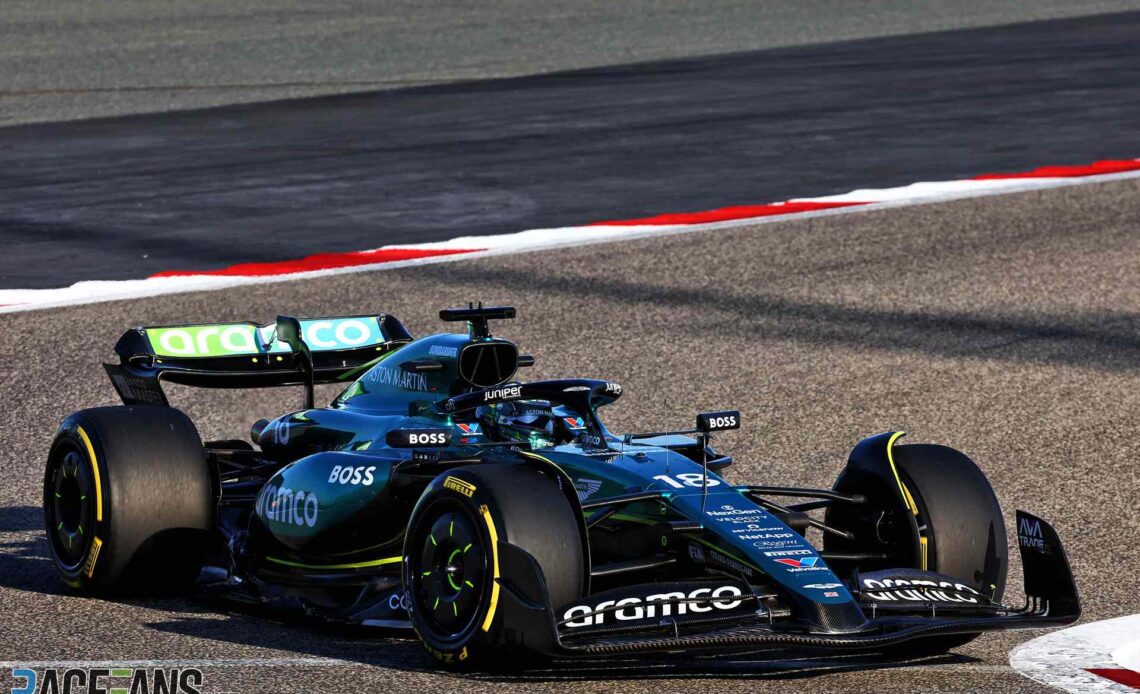The Aston Martin AMR24, which the team calls a “strong evolution” of last year’s car, has begun testing in Bahrain.
Aston Martin made a significant step forwards with its previous car at the start of last year but has played down expectations it could do the same this year. However having risen to fifth in the constructors’ championship in 2023, owner Lawrence Stroll has targeted a move into the top four this year.
To do that the AMR24 and its drivers will have to rack up enough points to beat either Red Bull, Mercedes, Ferrari or McLaren. Technical director Dan Fallows explained the key areas which have changed compared to last year.
“The chassis, nose, front wing, floor, and front and rear suspension are all new,” he said. “None of the surfaces are the same as AMR23 apart from those where the design is prescribed by the regulations. Pretty much everything has changed.”
The team has adopted some of the design trends seen elsewhere on the grid. Its nose is slightly shorter than last year and the front wing’s leading flap is unattached. The goal of this change is to improve the air flor into the car’s floor.
“We’ve changed the front wing so it does a better job of managing the wake from the front wheels,” said Fallows. “The bodywork has changed to manage the flow of air around the floor better and to control it more as it goes towards the rear wing. The floor has also changed because that’s the biggest area of downforce generation – it’s constantly evolving.”
As the team takes rear suspension components from Mercedes (along with the power unit and gearbox) Aston Martin has followed the manufacturer team’s move away from a pull-rod configuration at the back of the car.
“We now have a push-rod suspension layout at the rear,” said Fallows. “The front suspension has been altered to work better alongside the front wing and floor, and the rear suspension has changed to accommodate the latest power unit and gearbox assembly from Mercedes.”
In front of the sidepods, Aston Martin has added an extended lower lip, also seen on other designs. However it has continued to stick with the steeply undercut sidepod design used before, combined with a ramp on the inside of the sidepod which directs air downwards towards the rear suspension.
Besides the changes seen so far, Aston Martin is keen to ensure its latest car gives it greater freedom for development than it had last year. “We focussed on on all areas of the aerodynamics and…
Click Here to Read the Full Original Article at RaceFans…

